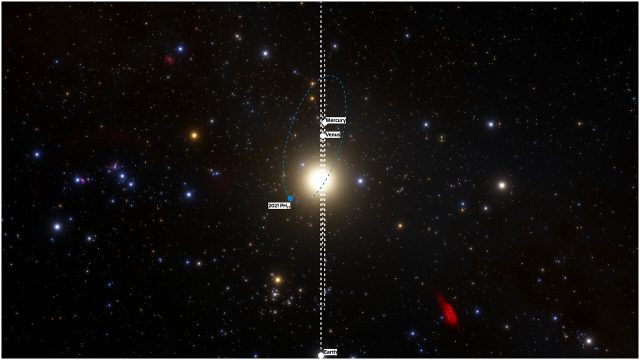Stargazers have found another space rock, however dissimilar to most newsworthy space shakes, this one isn’t remarkable on the grounds that it’s taking steps to hit Earth. The space rock known as 2021 PH27 stays away from our delicate blue marble. That distance changes broadly, however. As indicated by analysts at the Carnegie Institution of Science, 2021 PH27 is the quickest space rock circling the sun. All that’s needed is 113 days to finish a lap, and it gets hazardously near the sun each time.
Stargazers found the expedient space rock utilizing the Dark Energy Camera (DECam), which is important for the 4-meter Victor M. Blanco telescope in Chile. Recently, DECam has been centered around considering enormous world groups a huge number of light-years away. Recently, the observatory turned its consideration somewhat nearer to home looking for objects like 2021 PH27. The DECam is, all things considered, one of the greatest performing CCD imagers on the planet, and PH27 quickly stuck out.
Following the primary perception, different instruments focused in on PH27, which is about a kilometer in breadth. If it somehow happened to hit the Earth, that would be a sensibly terrible day for humankind. Fortunately, in the wake of figuring its circle, incidentally, PH27 just draws near to Mercury and Venus. It’s moving quick to the point that it finishes a circle of the sun at regular intervals. That is the quickest of any known space rock and just somewhat more slow than Mercury’s 88 days. In spite of the fact that, Mercury’s circle is more tight than PH27, which has a more curved circle.
While the planet Mercury has a more limited year, PH27 draws nearer to the sun due to its curved course. At its nearest approach, the space rock is about 12.4 million miles (around 20 million kilometers) from the seething combination fiery blaze, contrasted and 29 million miles (47 million kilometers) for Mercury. During these passes, the outside of PH27 comes to around 900 degrees Fahrenheit (500 Celsius).
Scott Sheppard, who mentioned the principal observable fact of 2021 PH27, takes note of that the space rock’s circle most likely isn’t steady over the long haul. In 1,000,000 years or thereabouts, PH27 will undoubtedly wind up slamming into Mercury, Venus, or the sun. It’s likewise conceivable it’ll get a gravitational kick from one of those articles that discharges it from the close planetary system.
PH27’s beginnings are hazy. In case it’s a common space rock, it presumably came from the space rock belt among Mars and Jupiter. Notwithstanding, its orbital tendency is shifted 32 degrees from the plane of the nearby planetary group. That proposes it very well may be an exceptionally old “terminated” comet that began in the external nearby planetary group. Extra perceptions arranged throughout the next few months could uncover new subtleties.
Disclaimer: The views, suggestions, and opinions expressed here are the sole responsibility of the experts. No Unique Analyst journalist was involved in the writing and production of this article.

